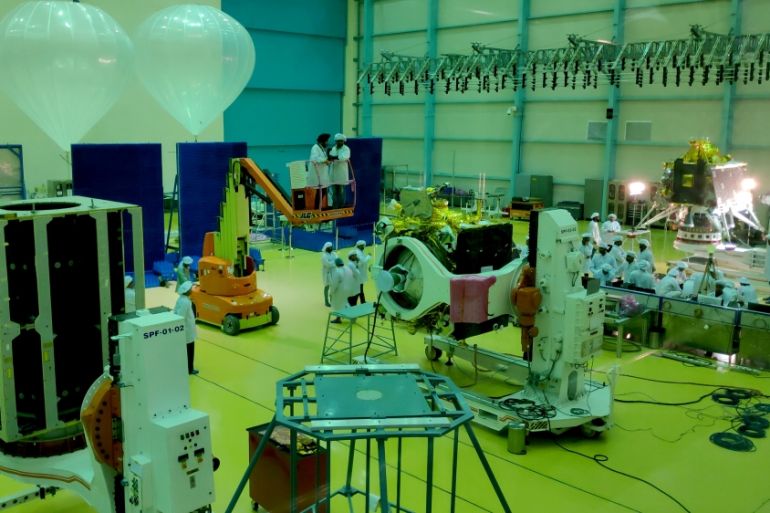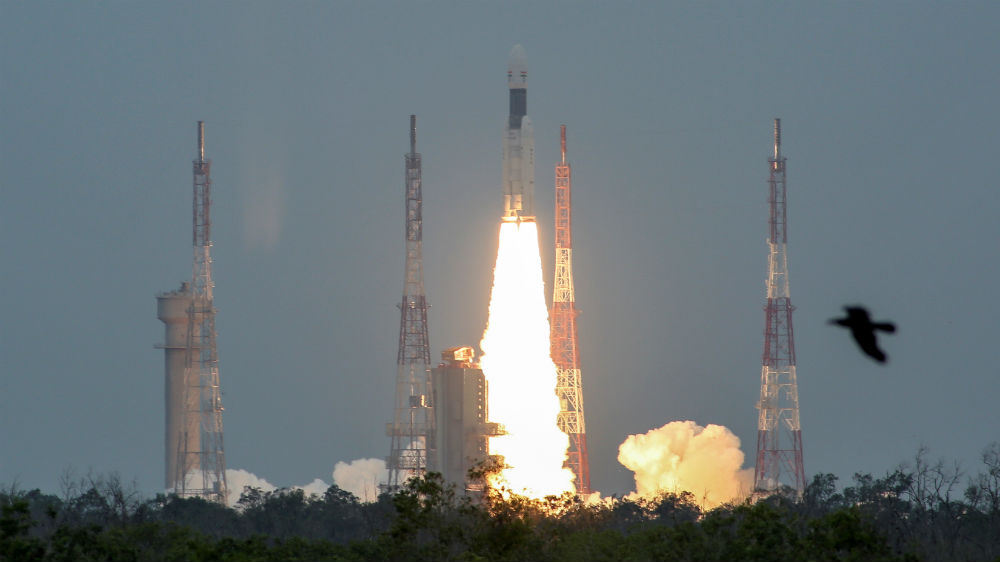Chandrayaan-2: India’s space agency has lunar moment of truth
Moon vehicle launched in July aimed for soft landing on mission to explore surface composition and location of water.

With just hours left on the clock, the space agency in India – a nation of well over one billion people – was bracing for landing.
Kailasavadivoo Sivan, the chairman of the Indian Space Research Organisation (ISRO), had repeatedly referred to the last, long-awaited moments as the “15 minutes of terror”.
Keep reading
list of 4 itemsBoeing postpones launch of Starliner space capsule after technical fault
China launches Chang’e-6 probe to study dark side of the moon
China launches historic mission to far side of the moon
But ISRO lost communication with its Chandrayaan-2 lunar mission on Saturday, Sivan said, in a setback to the nation’s ambitious plan to land an unmanned probe near the South Pole of the moon.
“Data is being analysed,” Sivan told a room full of distraught scientists at the agency’s tracking centre in Bengaluru.
A general mood of anxiety had surrounded the voyage, with much anticipation of success for the three constituent parts: an orbiter, a lander (Vikram) and a rover (Pragyan).
Delhi hoped for an effortless “soft landing” for Vikram on the moon’s South Pole, many weeks after the July 22 launch to confirm exactly where – and just how much – water is on our moon.
If the touchdown had succeeded, India would have joined the elite spacefaring nations: Russia, China and the United States. They are the only countries to have achieved such a technological feat on the moon.
‘Whatever is humanly possible’
The other space programmes that have technically reached the moon – from Japan, the European Space Agency (ESA) and India – all purposely crashed probes into the surface.
In April, a team from Israel made a soft-landing attempt, but that mission ended with the Beresheet lander failing to slow down, slamming into the moon and cutting the journey short.
Indian Prime Minister Narendra Modi was standing amongst the engineers and scientists at the Mission Operations Complex in Bengaluru.
At the appointed time, the Vikram lander’s computer was scheduled to carry out the landing sequence by using data gathered from onboard cameras and a laser rangefinder to control the thrust of five rocket engines – and eight boosters – guiding the craft towards a safe landing site on the moon’s South Pole.
“Once powered descent starts, we have no control over it,” Sivan had said at his last press appearance. “We have done all the simulation possible, for systems and subsystems, done whatever is humanly possible.”
Lunar wishes and wisdom
To avoid leaving the mission’s success to chance, in Mumbai some devotees of the Hindu god Ganesh had festooned the Lalbaugcha Raja Ganesh pavilion with models of the Vikram lander, two astronauts and space images to celebrate both the mission and the god’s 11-day birthday festival.
It was reported that before the pavilion opened, the queue was two to three kilometres long to see the idol – also known as Navsacha Ganpati, which in the regional language of Marathi means the “one who fulfils all wishes”.
India’s space ambitions not only include eventually sending a home-grown astronaut into space but becoming a greater commercial provider of space-related services.

India’s Department of Space, which Sivan also leads, earlier this year unveiled its commercial arm, New Space India Limited (NSIL).
The government hopes NSIL will build upon the Indian space industry’s annual revenues of $7bn and Chandrayaan-2’s accomplishments.
The lander Vikram was named after Vikram Sarabhai, the father of the Indian space programme.
Once on the ground, the lander was to lower a ramp and release the Pragyan rover. In Sanskrit, Pragyan means “wisdom” and Chandrayaan translates as “moon vehicle”.
The lander’s three scientific instruments were to study seismic activity, the surface’s ability to absorb heat, and the moon’s ionosphere. The rover’s instrumentation was to examine the elements that make up the lunar surface – explicitly, but not exclusively, the building blocks for water.
The Chandrayaan-2 orbiter – the spacecraft that brought the lander and rover to the moon from Earth – was slated to collect data on the moon’s surface composition and atmosphere, as well as to map the terrain, to see where ice made of water might be located.